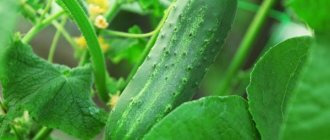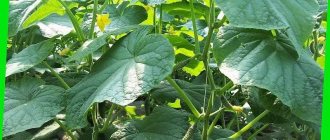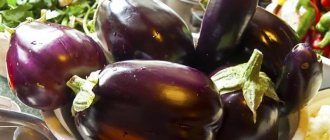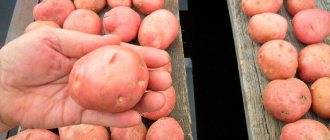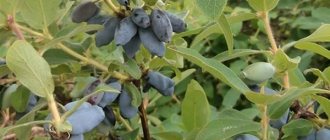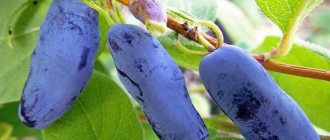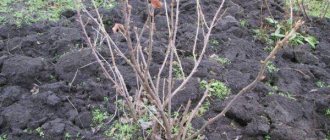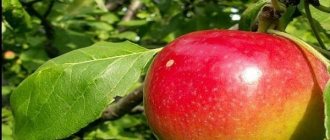No one will argue that cucumber is the most common vegetable crop, which is grown both in large enterprises and in small summer cottages. This vegetable is good for the body and contains vitamins and minerals. Cucumbers are well suited for fresh consumption, salads, and canning. They grow and mature quickly. Therefore, many gardeners prefer to grow cucumbers on their site.
The cucumber came to us from tropical countries, so it loves sunny weather and grows well in warm regions of the country. One of the worthy representatives of cucumbers is the “Competitor” variety. It was bred in 1980 in Crimea for cultivation in southern Russia. Over time, it took root in less warm regions.
So, let’s look at what makes the “Competitor” cucumber variety special. We will also learn how to grow it and care for it properly. Let's find out how to protect the cucumber harvest from pests and diseases.
Description of the cucumber variety “Competitor”
“Competitor” refers to early ripening varieties of cucumbers. From planting the seeds in the ground until the fruits begin to ripen, only 45–50 days pass. Sowing of seeds begins in the last days of May or the first weeks of June. There is no need to rush into planting, because cucumber is a heat-loving plant. The growth of the root system of cucumbers exceeds the growth of the above-ground part by 3 times. But after fifty days of growth, the roots and shoots are comparable in size. Then it is the above-ground part that grows more actively, and the root system grows to the required size and stops growing. The stem of cucumbers grows rapidly and forms tendrils that can easily cling to any support. "Competitor" cucumbers have heart-shaped leaves.
The cucumber begins to bloom a short time after germination. The reproductive organs are divided into male and female. Male organs are incapable of forming ovaries. The corolla is yellow in color. In the southern regions, flowers open very early, at about 4 o'clock in the morning, and in the northern regions - only from 6 o'clock. The pollen is only viable for a couple of hours after opening. Pollination of cucumbers is carried out by bees. After 12–13 days, the inflorescences will fall off and cucumbers will begin to form. With proper care and suitable weather conditions, the first cucumber fruits will ripen within 45 days after seed germination.
Cucumber variety "Competitor" has a fairly high yield. You can collect from 3 to 4 kilograms of fruit per 1 m2. These indicators depend on the duration of the fruiting period. Cucumbers can bear fruit for about ninety days. It all depends on weather conditions and sudden temperature changes. Because of such moments, the yield and timing of fruit formation decrease.
Advantages and disadvantages
The advantages of the Competitor variety include the following properties:
- high seed germination;
- good germination of seedlings;
- excellent pollination rate;
- this variety gives a very high yield;
- The competitor bears fruit for a relatively long time;
- greens of this variety have an excellent appearance and excellent taste;
- The plant is resistant to powdery mildew.
The disadvantages of this variety include the fact that if the fruits are not picked on time, they quickly turn yellow. The skin of such greens becomes cracked and thickens. In addition, they no longer smell like cucumbers are supposed to.
Note! If plants of this variety are not watered enough, their flesh becomes bitter. If you follow the rules of agricultural technology, a high-quality, abundant harvest will not be long in coming.
- The Competitor variety has many advantages, including:
- high level of germination;
- high survival rate after the transplant process;
- good resistance to fungal diseases, namely powdery mildew;
- long fruiting period;
- the ability to prepare seed material yourself.
- Among the main disadvantages of this variety are its intolerance to overexposure in the garden, which can lead to:
- rapid spoilage of fruits;
- thickening of the skin;
- crack formation;
- loss of aroma and bitterness.
Despite the emergence of a huge number of varieties and hybrids, this cucumber remains on the list of top preferences for gardeners. Interestingly, it is readily grown in various regions of the country, and even with a short summer in the regions of the North-West, the Konkurent variety is beyond competition.
"Pros":
- long harvest period;
- good plant germination rates;
- the ability to prepare your own seeds for sowing;
- good taste of greens;
- high complex resistance of the Competitor to many diseases;
- unpretentiousness.
The “disadvantages” are usually noted:
- deterioration of taste when greens outgrow;
- reduction in yield when grown on spread beds;
- the appearance of cracks and coarsening of the skin if harvested untimely.
If the watering schedule was disrupted and a long “dry” pause was allowed, the pulp of the greens becomes bitter. The skin of overgrown fruits turns yellow, and the aroma of cucumbers disappears.
Fruit characteristics
Cucumbers belong to the pumpkin crops. This means they are false berries. Inside the fruit there are compartments with seeds (chambers). Cucumbers are cylindrical, oval. “Competitor” is dark green in color. The fruit is large, its surface is completely covered with tubercles with soft spines. A fully ripe cucumber can reach up to 13 centimeters in length. The weight of one fruit will be about 130 g. The fruit stem of the “Competitor” is long, so cucumbers are very convenient to pick.
Cucumbers of the “Competitor” variety have excellent taste. The fruits are not bitter when fresh, so they are great for summer salads. The pulp of cucumbers is juicy and has a sweetish taste. Suitable for canning on its own or in combination with other vegetables. The fruits are stored well in a cool place. Reviews about “Competitor” cucumbers are only positive. Gardeners are satisfied with the harvest and taste of this variety.
Reviews from summer residents
- I have been growing the Competitor variety for three years. There are no complaints about him. The harvests are always good. I didn’t see any significant diseases. The variety needs proper formation of vines and fertilizing. Ripe cucumbers are tasty and perfect for pickling and various types of preserves. A good variety for the garden and greenhouse. I recommend.
- The variety has proven itself well in greenhouse conditions. The bushes consist of powerful vines with many flowers. Thanks to this I collect up to 5 kg. fruits from 1 sq. m. It is very important to carry out timely care for the bushes. It is necessary to normalize the harvest and cut off excess shoots. It is necessary to water. The variety may suffer from downy mildew.
- I have been growing this variety for quite some time. In principle, I am satisfied with the variety. Good harvests, tasty fruits. The plants are very powerful and need staking. Few diseases are affected. Grows well in the garden and in the greenhouse. The variety needs high-quality watering and proper fertilizing. An excellent and proven variety.
- I experimented with varieties for a long time, but chose the Competitor variety. With a good harvest, you can harvest up to 5.5-6 kg. fruits from 1 sq. m. The quality of the harvested crop is good. The scourges grow quickly. Lots of flowers and ovaries. Plants need to be fed, watered and shaped. An excellent variety for the garden plot.
Planting and growing cucumbers "Competitor"
As always, planting begins with preparing the seeds. They need to be calibrated, or, in other words, to separate small and non-viable seeds. To do this, they are dipped into a salt solution. To prepare it you need to mix:
- 30 grams of salt;
- 1 liter of water.
Stir until the salt crystals are completely dissolved. Place the cucumber seeds in a container with the solution for ten minutes and wait until the seeds separate. Unusable seeds should float to the surface, which must be carefully collected with a spoon. Those seeds that remain at the bottom are excellent for planting in the ground. Now they need to be washed and disinfected. This is done using a weak solution of potassium permanganate or boric acid. The seeds are dipped into the solution and kept for about 24 hours.
Advice! Choose seeds from last year's harvest for growing cucumbers. And even better if they are several years old.
The longer cucumber seeds last, the more flowers with female reproductive organs will appear on the plants. Up to 6 years of storage, cucumber seeds retain their properties perfectly and are suitable for cultivation.
In principle, the seeds are already ready for planting. If you are not going to additionally germinate the seeds, then after this stage you can dry them and start planting. But you can cultivate the seeds before planting, and then the germination of cucumbers will be one hundred percent, because you can plant only those seeds in the ground that will germinate. Calibration is considered an effective method of seed selection, but it cannot always determine the quality of seeds with the highest accuracy.
“Competitor” cucumbers can be grown both in open ground and in greenhouses. It all depends on the weather conditions of your region. For the middle zone, it is recommended to plant cucumber seeds under temporary film covers. Cucumbers germinate well at temperatures from +20 °C to 25 °C. Moderate soil moisture is also important for them. The soil should not be too wet or too dry. Under such conditions, the first shoots will appear within 4–5 days. There is no need to warm up the seedlings. Too high a temperature can reduce the growth rate of cucumbers, and prolonged heat will completely destroy the sprouts. Therefore, if the air temperature reaches more than +35 °C, then cucumbers should be shaded.
It is recommended to plant seeds at a distance of forty centimeters from each other, and forty centimeters between rows of cucumbers. It is best to grow cucumbers in beds where tomatoes, potatoes and onions previously grew.
Attention! Gardeners have noticed that “Competitor” cucumbers bear fruit better on trellises than on the ground. You can plant corn between the rows of cucumbers as a support.
Sowing seeds
This variety is designed for seedling and non-seedling cultivation. In the southern part of the country, seeds are sown in open ground; in cool regions, seedlings are first grown and transplanted into the garden.
Seed preparation
If you plan to plant your own seeds, know that the best germination is achieved in the 2nd or 3rd year. Accordingly, if you store the seeds in a cool place without high humidity. It is permissible to use the Competitor's seed material for 6 years.
How to prepare the grains:
- sort - to do this, immerse in salted water for 10-15 minutes, and remove the floating elements;
- wash the seeds;
- disinfect - make a weak solution of manganese, immerse the seeds in it for 24 hours;
- soak the seeds in water;
- transfer to wet gauze;
- let it germinate.
Landing dates
When using the seedling method of growing Competitor cucumbers, the planting date is calculated. For this purpose, the date of diving into open ground is determined. From there you need to count back about a month. For example, transplantation to a permanent place is planned for May 1. This means that the seeds are planted on April 1-5.
When planting without seedlings, temperature requirements are met: the soil and air must have a temperature of at least 15-16 degrees. If urgent disembarkation is required, then use this expert advice:
- prepare the soil;
- cover the area with black film;
- let sit for at least 4 days.
Selecting a location
It is recommended to plant cucumbers in a new place every year. The best plot for the Competitor is considered to be the land on which tomatoes, onions, cabbage, and potatoes grew last year. Do not plant after legumes and carrots.
Soil preparation
The competitor is considered an unpretentious plant, but to increase productivity it is necessary to prepare the soil. Approximately 30 days before planting activities, disinfection is carried out. To do this, the earth is filled with a weak solution of manganese or scalded with boiling water. After 2 weeks, the soil is dug up with simultaneous application of fertilizers. To do this, you need to make a solution (the dosage is indicated per 2 square meters):
- 20 liters of compost or slurry;
- 60 grams of urea;
- 30 grams of potassium chloride;
- 60 grams of superphosphate;
- 40 grams of potassium sulfate.
Mix the ingredients thoroughly and water the area.
Sowing schemes
Since the Competitor’s stems grow rapidly, it is advisable to grow the variety on trellises. To do this, 2 rows of seeds are sown (seedlings are planted) with a distance of 20-40 cm, and wooden pegs are driven between them every meter. Wire is attached to them or slats are mounted.
Features of planting seedlings
The Competitor's root system is not particularly powerful, so it is advisable to plant sprouted seeds in peat pots or briquettes. In this case, the root will not be damaged when picking. 2 seeds are placed in each pot.
Features of planting in open ground
When planting in a garden, it is advisable to follow a 40x40 cm pattern, but with the trellis method, a 20x40 cm pattern is suitable. Planting is carried out after disinfecting the soil and applying complex fertilizer. That is, after preparing the soil.
In order for the seeds to germinate faster and the harvest to be significant, be sure to fluff up the soil and saturate it with humus.
Caring for cucumbers of the “Competitor” variety
The variety is unpretentious and also has high disease resistance. It is not affected by bacterial spot and powdery mildew. Thanks to this alone, a high harvest is guaranteed.
Although the plant can grow and bear fruit on the ground, it would be better to install special poles or construct other structures so that the cucumber branches can grow evenly without getting tangled with each other. Recently, vertical supports to which stems are tied have become very popular.
In short, “Competitor” cucumbers need the following care:
- Regular moistening of the soil.
- Removing weeds from the garden.
- Fertilizing with mineral or organic fertilizers.
- Loosening the soil.
Insufficient moisture in the soil can greatly slow down plant growth and, as a result, reduce yield. And since cucumbers are not good at extracting moisture from the ground on their own, they should be watered regularly, especially in hot weather. Due to lack of liquid, cucumbers may develop a bitter, cucumber-like taste, especially near the stem. The same thing happens when the air temperature is too high.
Oxygen is also very important for the “Competitor” variety. For its full supply, it is necessary to loosen the top ball of soil from time to time so that a crust does not form. Regular manure is perfect for feeding cucumbers. This organic fertilizer helps the plant convert carbon dioxide into oxygen.
No more than 10–15 cucumbers can be placed on the stem; all the rest must be picked. So, the fruits will grow better. Make sure to pick cucumbers from the branches in time, otherwise they will turn yellow and the seeds will begin to ripen and become hard.
The main pros and cons of the variety
The characteristics of each vegetable variety have positive and negative qualities. Advantages of the Competitor variety:
- productivity - with proper care, 3-6 kg of cucumbers are harvested per square meter of bed. Moreover, the first vegetables appear already in mid-June. The green tint of the skin on picked cucumbers lasts for a long time;
- the bushes are practically not affected by common cucumber diseases: peronospora, powdery mildew, olive spot, bacteriosis. If the green mass or fruits are affected by aphids, you need to spray the plant with chemicals Biotlin BAU, Tanrek against aphids;
- good germination of planting material. Seeds germinate 3-5 days after planting.
- Experienced gardeners advise paying attention to the following disadvantages of the Competitor variety:
- cucumber vines grow quite long and branchy. Therefore, the variety is not suitable for growing in compact beds;
- even slightly overripe fruits have harsh skin and seeds.
Lack of watering immediately affects the quality: cucumbers acquire a characteristic bitter taste.
Pests and diseases
To prevent possible fungal and viral diseases, cucumbers are treated with special preparations that contain copper. For example, Bordeaux mixture or copper oxychloride. This procedure must be carried out as soon as up to 2-3 leaves appear on the cucumber sprouts. These drugs are also used for manifestations of cucumber diseases.
Important! Cucumbers should be treated with chemicals in the morning or evening to prevent burns on the leaves.
Features of care
In order for “Competitor” cucumbers to grow and bear fruit well, it is necessary to follow the rules of caring for them: regularly weed the beds, water abundantly and in a timely manner, lightly loosen the soil around the cucumbers and fertilizers. According to the description of the “Competitor” cucumbers, caring for them does not cause any difficulties; it is only important to be aware of certain biological characteristics of the plants:
- The beds should be organized using light, medium and sandy loam, not forgetting about the abundance of minerals and organic matter.
- The beds are prepared immediately after the predecessor vegetables are harvested.
- Deep digging of the beds and parallel application of organic fertilizers are required, among the favorites are manure and vermicompost in combination with potassium and phosphorus components.
- With the development of active vegetation, fertilizing is carried out during the appearance of flowers and the budding process.
- As for the irrigation system, a modern drip irrigation system for cucumber crops is used.
If, while growing cucumbers, you find the slightest signs of insects or diseases on the vegetables, then immediately carry out preventive measures, where, in each specific case, select certain chemicals. So, to prevent fungi and viruses, they are treated with products that contain copper, for example, its oxychloride or Bordeaux mixture.
The procedure is carried out when cucumber diseases occur and when a pair of leaves appear on the sprouts. This treatment is carried out in the morning or in the evening to avoid burns on the leaves.
